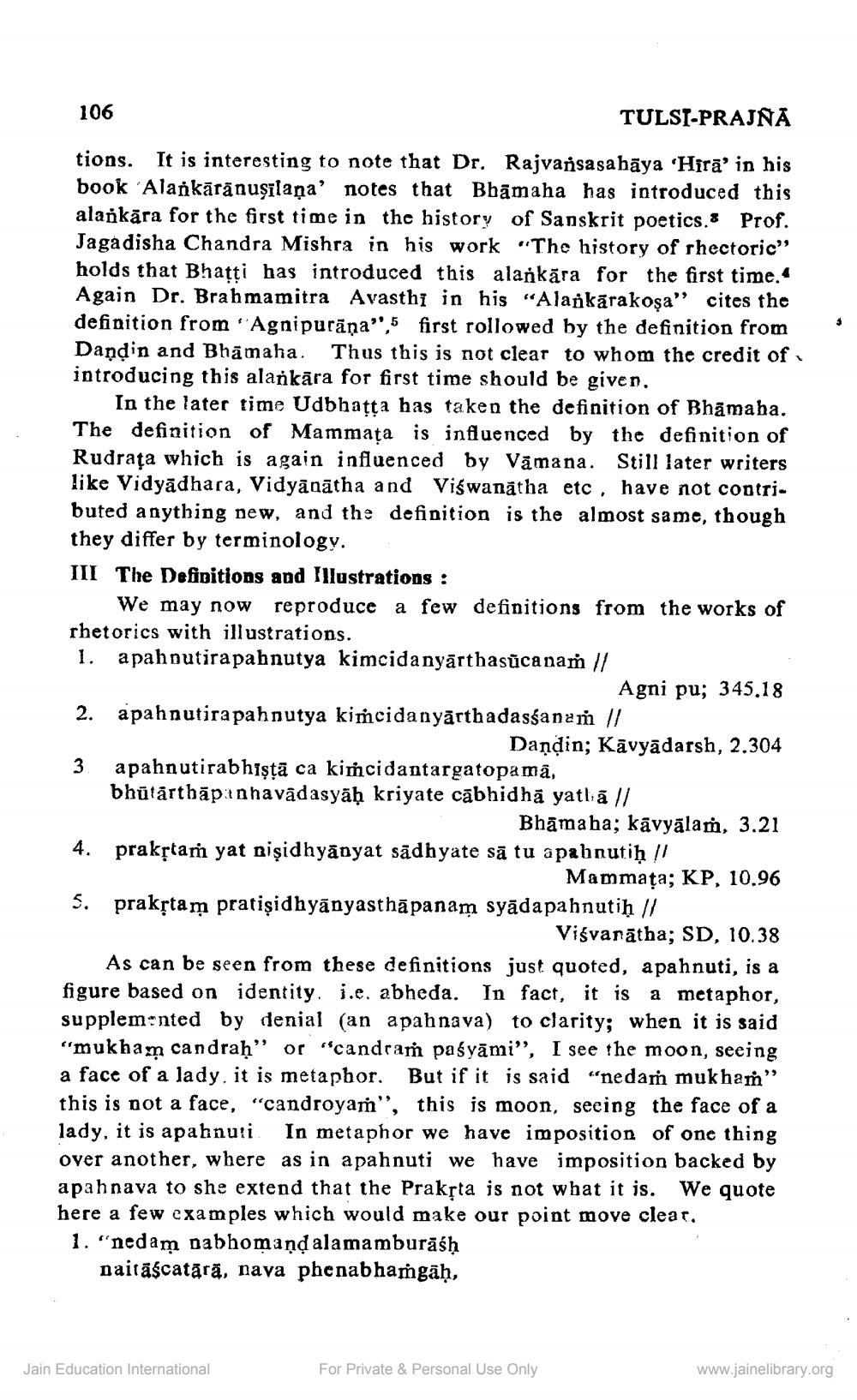________________
106
TULSI-PRAJNA
tions. It is interesting to note that Dr. Rajvarsasa hāya 'Hirā' in his book Alankārânuşilaşa'notes that Bbāmaha has introduced this alankāra for the first time in the history of Sanskrit poetics.8 Prof. Jagadisha Chandra Mishra in his work "The history of rhectoric" holds that Bhatti has introduced this alankāra for the first time. Again Dr. Brahmamitra Avasthi in his "Alankārakosa" cites the definition from 'Agnipurāna”,5 first rollowed by the definition from Dandin and Bhāmaha. Thus this is not clear to whom the credit of introducing this alańkāra for first time should be given.
In the later time Udbhatta has taken the definition of Bhāmaha. The definition of Mammata is influenced by the definition of Rudrata which is again influenced by Vāmana. Still later writers like Vidyādhara, Vidyānātha and Viswanatha etc, have not contri. buted anything new, and the definition is the almost same, though they differ by terminology. III The Definitions and Illustrations :
We may now reproduce a few definitions from the works of rhetorics with illustrations. 1. apahputira pahnutya kimcidanyārthasūcanaṁ //
Agni pu; 345.18 2. apahnutira pahnutya kimcidanyārthadassanaṁ ||
Dandin; Kāvyādarsh, 2.304 3 apahnutirabhiştā ca kimcidantargatopamā, bhūtarthāpanhavadasyāḥ kriyate cābhidhã yatlā //
Bhāma ha; kavyālam, 3.21 4. prakstam yat nişidhyānyat sādhyate sā tu apabnutih ||
Mammața; KP, 10.96 5. prakstam pratișidhyānyasthāpanam syādapahnutiḥ 11
Visvarātha; SD, 10.38 As can be seen from these definitions just quoted, apahnuti, is a figure based on identity. j.e. abheda. In fact, it is a metaphor, supplemented by denial (an apahnava) to clarity; when it is said "mukham candraḥ" or "candraṁ paśyāmi”, I see the moon, seeing a face of a lady, it is metaphor. But if it is said “nedaṁ mukham" this is not a face, "candroyam", this is moon, seeing the face of a lady, it is apahnuti In metaphor we have imposition of one thing over another, where as in a pahnuti we have imposition backed by apahnava to she extend that the Prakrta is not what it is. We quote here a few examples which would make our point move clear. 1. "nedam Dabhomaņa alamamburāsḥ
naitāscatārā, nava phenabhamgāh,
Jain Education International
For Private & Personal Use Only
www.jainelibrary.org




